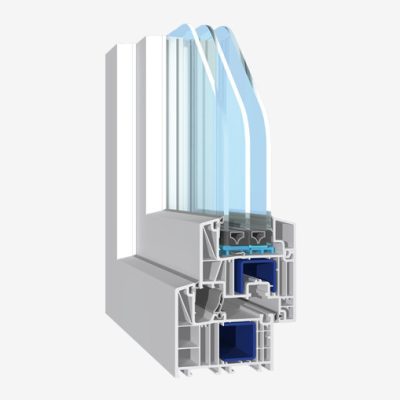Today, Roman blinds are becoming increasingly popular. In addition to their undeniable decorative qualities, they are also functional and versatile. They can be used in almost any room, except for the bathroom. Roman blinds are a decorative combination of curtains and net curtains, with the convenience of a roller blind. They are divided into several types, providing different degrees of shading and decorative effect.
What is a roman blind?
Roman blinds are a combination of roller blinds, net curtains and curtains and are a unique window decoration. Roman blinds are made of various fabrics. When the blind is raised, the fabric rolls up into even, horizontal folds about 20-30 cm wide, depending on the width and height of the fabric.
The roller blind is controlled by a bead chain or an electric drive. The use of a self-locking mechanism allows the blind to be set in the desired position. The fabric is attached to the cassette with Velcro, making it extremely easy to remove the fabric for washing.
Versatility and practicality
The wide range of fabrics makes roman blinds a perfect addition to both classic and modern interiors. This is because roman blinds are not conspicuous and their colour can be adapted to any room. It is the only type of roller blind that allows you to easily remove the fabric, wash it and put it back on. We also have the option of replacing the fabric itself, which makes it easy to change the decor of the room.
Types of Roman blinds
Depending on the effect we want to achieve by installing a Roman blind, we use appropriate fabrics to make them. Therefore, Roman blinds can be divided into individual types.
- transparent roman blinds (highly translucent, made of light, thin, translucent voile or organza fabric),
- blackout (made of thick cotton or blackout fabric),
- day/night (models inspired by classic day/night roller blinds, but with a roman blind mechanism)
Installation methods
Roman blinds can be mounted in several ways: to the frame of the window casement (it is possible to use non-invasive catches), to the window recess, to the wall or ceiling, or on a curtain rail. It is also possible to install electric motors with wired or radio control on Roman blinds.
Read also:
CHARACTERISTICS AND FEATURES OF EXTERNAL ROLLER SHUTTERS
Installation on the window frame
When installing a roman blind on a window frame, we use special non-invasive brackets that do not damage the frame, and the installation is very quick and easy. Unfortunately, a serious disadvantage of this solution is the reduction in the amount of light that enters. On the other hand, the advantage is the speed with which you can open the window and go out onto the terrace or balcony, for example, because the window opens together with the roller blind. On the other hand, this is also a disadvantage, as it reduces the range of window opening.
Installation on the wall or ceiling
Roman blinds can be attached to the wall or ceiling of a room or window recess.
In very high rooms, it is better to mount the roller blind to the wall or ceiling of the window recess. In other cases, roller blinds mounted just below the ceiling or to the ceiling look good.
Roman blinds on a curtain rail
A Roman blind can also be mounted on a curtain rail. There are two types of blinds that are suitable for this purpose: the brace-type and the tunnel-type. A roman blind with straps is the easiest to install – all you have to do is hang it on a tubular curtain rail.
Read also:
FLUSH-MOUNTED ROLLS – MODERNITY IN EVERY HOME



